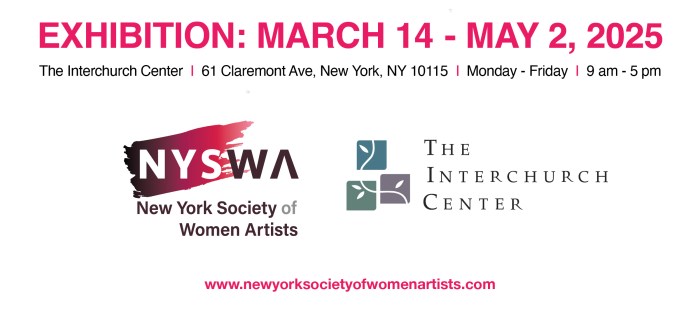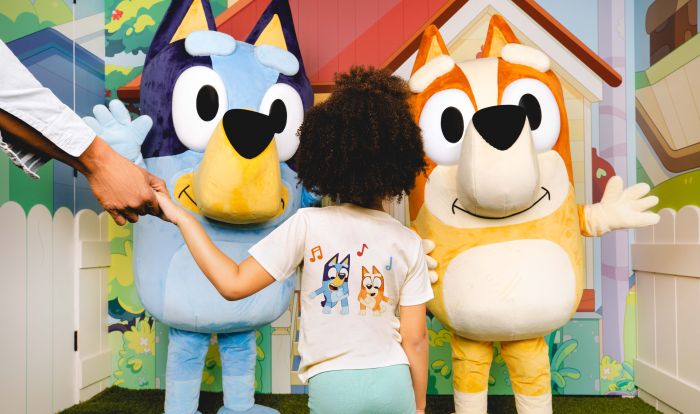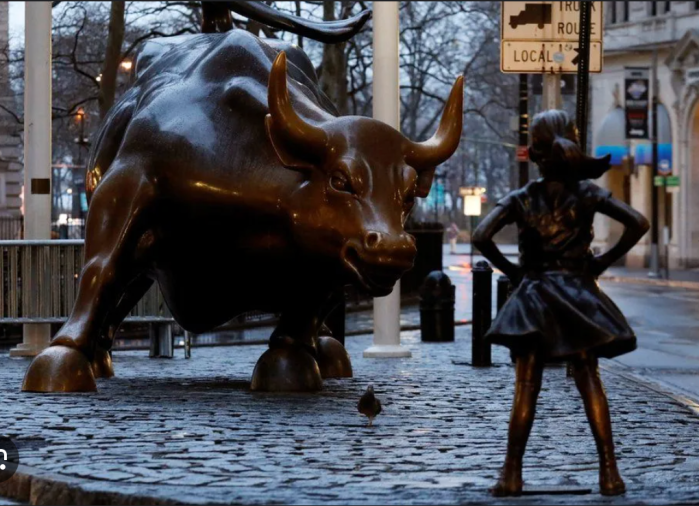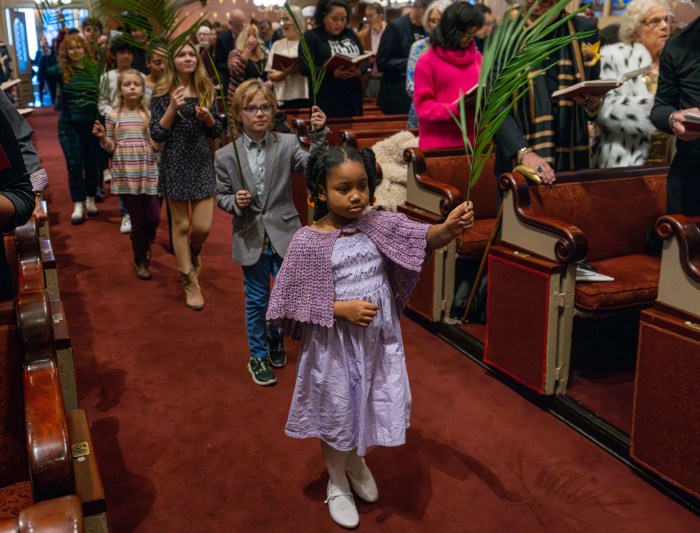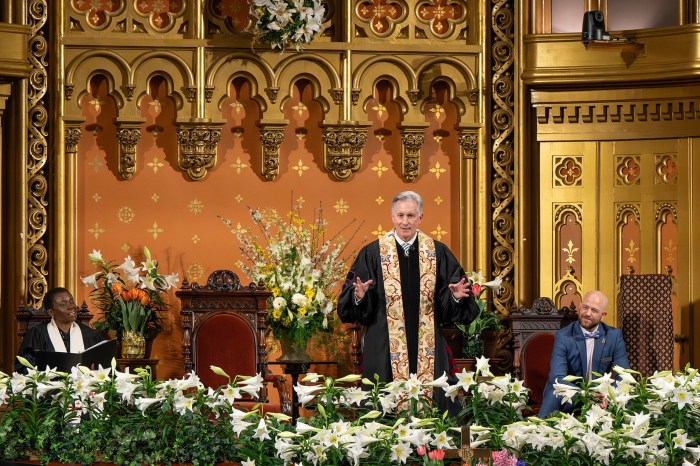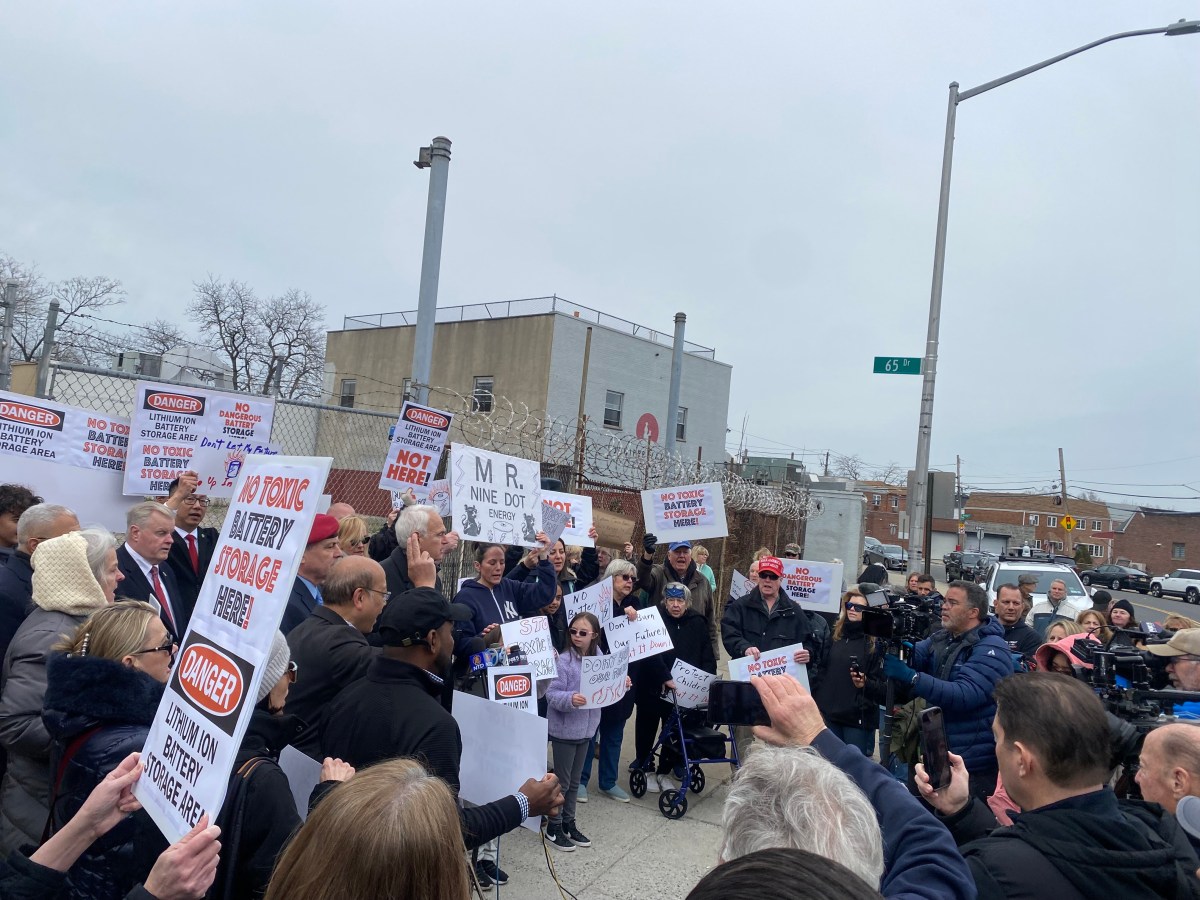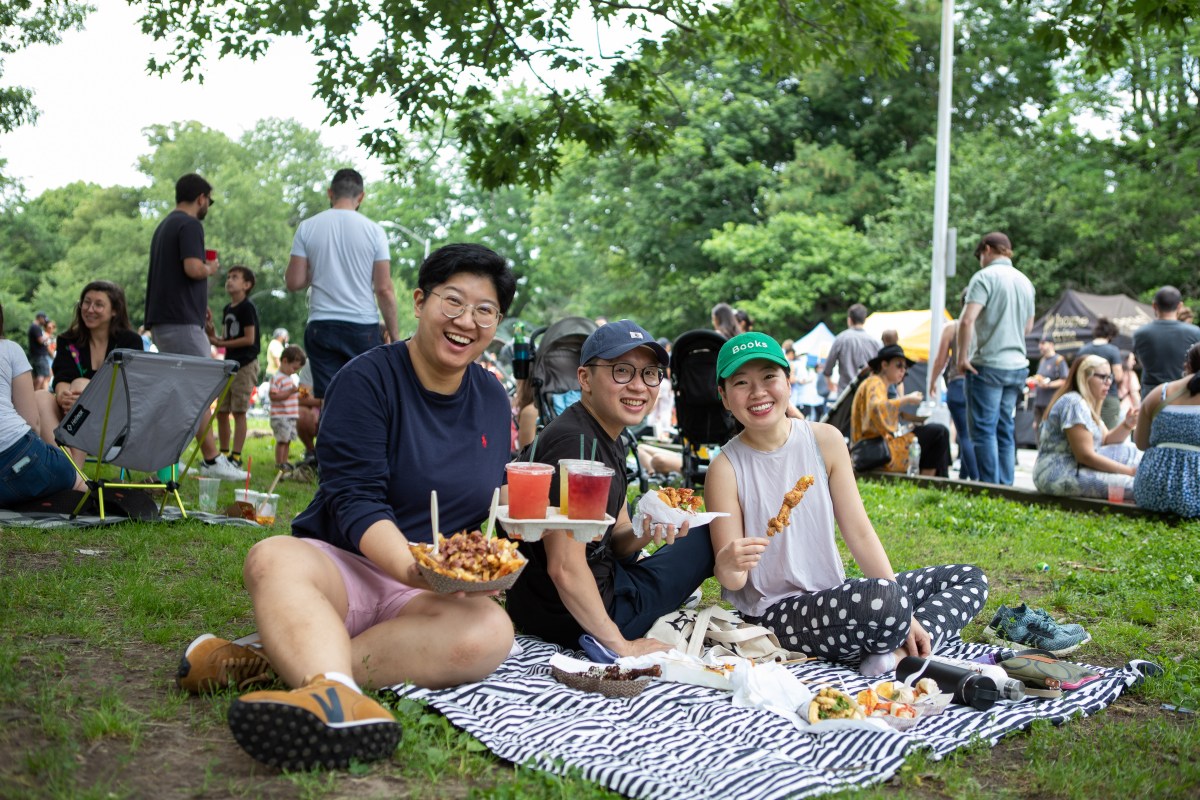By Albert Amateau
Elected officials and bicycle advocates created a temporary bike lane on W. Houston St. last week, protecting it from auto traffic with their own bodies in a demonstration demanding permanent bike lanes on the six-lane thoroughfare currently under reconstruction.
The Aug. 30 event, organized by a special Community Board 2 committee, took place between Mercer and Greene Sts., two blocks from where a bicyclist was killed on June 26 when a truck hit him. It was the third bicycle fatality on Houston St. in the previous 13 months.
While the Houston St. reconstruction, which began more than a year ago, calls for bike lanes between F.D.R. Dr. and Forsyth St., there are no designated bike lanes planned for the western two-thirds of the street notorious for accidents fatal to pedestrians as well as cyclists. Even on the eastern third of the project, the specific bike lanes have not yet been laid out.
Neighborhood advocates in Soho and Noho have long been frustrated in their demands for bike- and pedestrian-friendly features for the east-west artery whose reconstruction plans appear exclusively for the convenience of trucks and cars.
Last week, elected officials turned up in person or sent representatives to join demands for two-way bike lanes protected by physical barriers from speeding auto traffic.
“New York City needs to become a more bicycle-safe city and needs to begin it on Houston St.,” said City Councilmember Alan Gerson, who came to the event on his bike from his home a half-block north of W. Houston St.
Gerson, who has proposed creating a Bicycle Commission as a new city agency, recalled biking in Soho as a youngster, “when it was like an abandoned village.” He said the city must accommodate bicycles and pedestrians, as well as the increased motor traffic that came with the neighborhood changes. In addition to bike lanes, Gerson urged the elimination of the special left-turn bays planned for Houston St., which he said would make the street more dangerous for both cyclists and pedestrians.
Assemblymember Deborah Glick recalled the grassroots fight a generation ago that defeated Robert Moses’ proposal for a Lower Manhattan Expressway.
“We have to make sure Houston St. is not a Lower Manhattan Expressway,” she said. Glick said bike lanes are needed on Houston St. and she too called for elimination of left-turn bays, “which are designed to speed [car] traffic crossing Houston St.”
Manhattan Borough President Scott Stringer invoked the memory of the three cyclists killed on the street and called on the city to given pedestrians and cyclists the right of way on Houston St.
“It has become the highway of death,” Stringer said. “We don’t need another Queens Boulevard on Houston St.,” he added, referring to the notoriously dangerous Queens thoroughfare.
State Senator Martin Connor said bike lanes on Houston St. were a good idea.
“Let’s make Houston St. and the whole city safe for bicycles. It’s time to put people ahead of cars,” he said.
Bike riders, including several from Brooklyn who cycle across Houston St. to work in Manhattan and others active in the weekly Critical Mass bicycle actions, joined the Aug. 30 rally. Cyclists dressed as clowns were among the dozen bike riders who made the ceremonial ride along the half-block human barrier bike lane, with a pedicab bringing up the rear.
“I don’t bike on Houston St. anymore,” said Kate Mikuliak, an aide to Councilmember Rosie Mendez. “It’s too dangerous and I don’t like to pass those ghost bikes,” she added, referring to the white-painted bicycles that a group, Visual Resistance, has chained to curbside signposts at the sites of fatal accidents.
Ghost bikes along Houston St. include one at LaGuardia Pl., where Derek Lake, 23, of Brooklyn, lost his life on June 26 this year when a truck hit him; another at E. Houston and Elizabeth St. where Andrew Morgan lost his life on June 22, 2005, when his bike was hit by a truck, and one at E. Houston St. and Avenue A where Brandie Bailey was killed on May 8, 2005, when a garbage truck struck her.
Ian Dutton, a public member of Community Board 2 and prime mover of the board’s ad-hoc committee for Houston St. bike lanes, noted that the Department of City Planning’s 1997 Bicycle Master Plan developed with the Department of Transportation had designated Houston St. as a proposed bicycle route. This year, the New York City Cycling Map published by the City Planning and Transportation departments also has Houston St. marked as a bike route.
Planned but not yet laid our on the eastern third of Houston are 5-foot-wide bike lanes with buffers at least 3 feet high. But the reconstruction plans omit any indication of bike lanes on the western end of the street.
Phil Mouquinho, chairperson of the Community Board 2 Sidewalks Committee, called for Houston St. bike lanes and Elizabeth Gilmore, a C.B.2 Transportation Committee member, came to the rally from her home on 11th St. on her bike
Transportation Alternatives, which advocates for public transit and bicycle riders, noted that Houston St. is a logical bike route, linking several mixed-use neighborhoods and connecting East River Park with the Hudson River bikeway and walkway.
Charle Cafiero, a Noho Neighborhood Association member formerly on C.B. 2, recalled a long history of vain neighborhood pleas to make Houston St. safe for bicycles and pedestrians.
“I think you need a club and some baseball bats to make the Department of Transportation recognize how dangerous Houston St. has been for 20 years. Maybe the elected officials will help,” he said.








